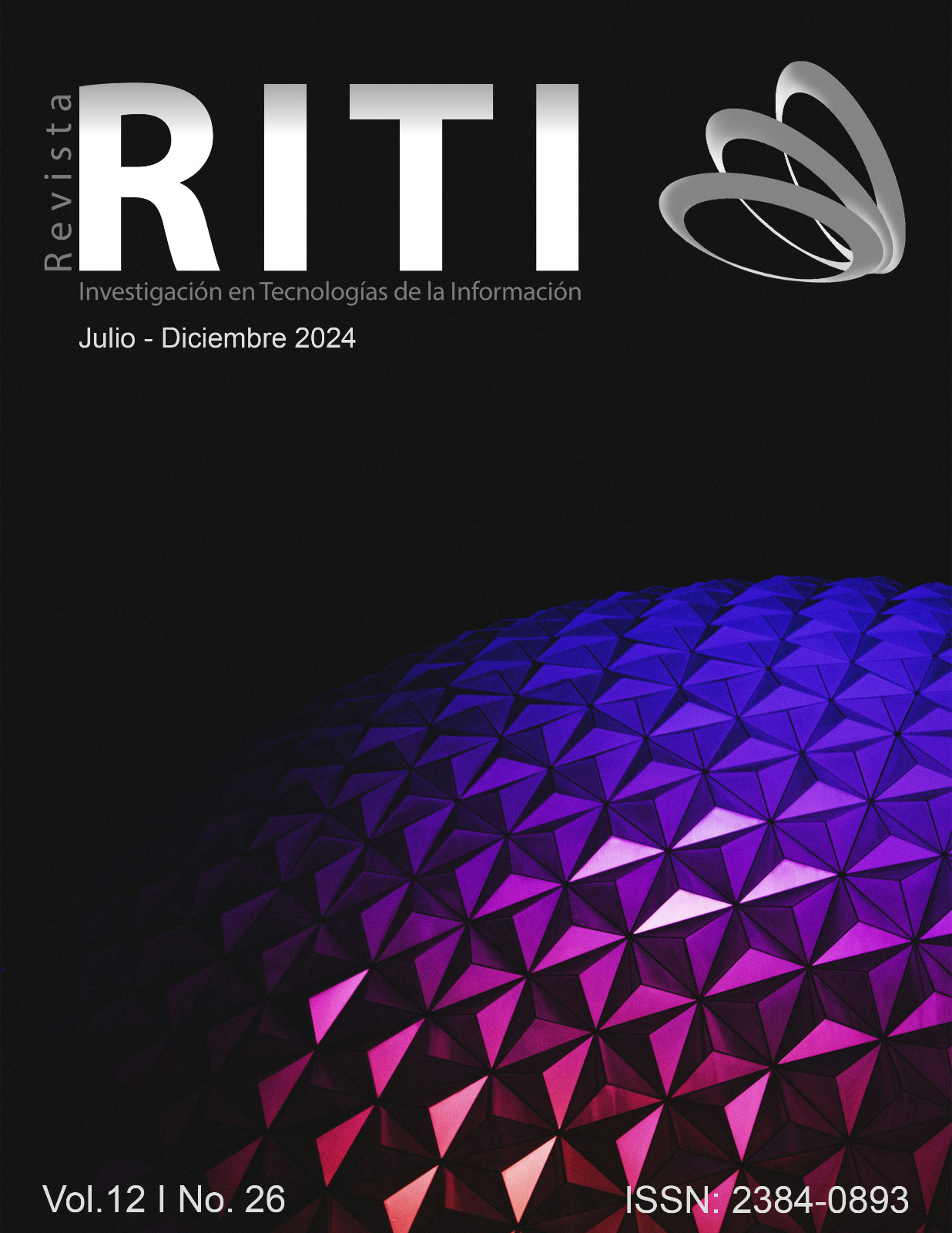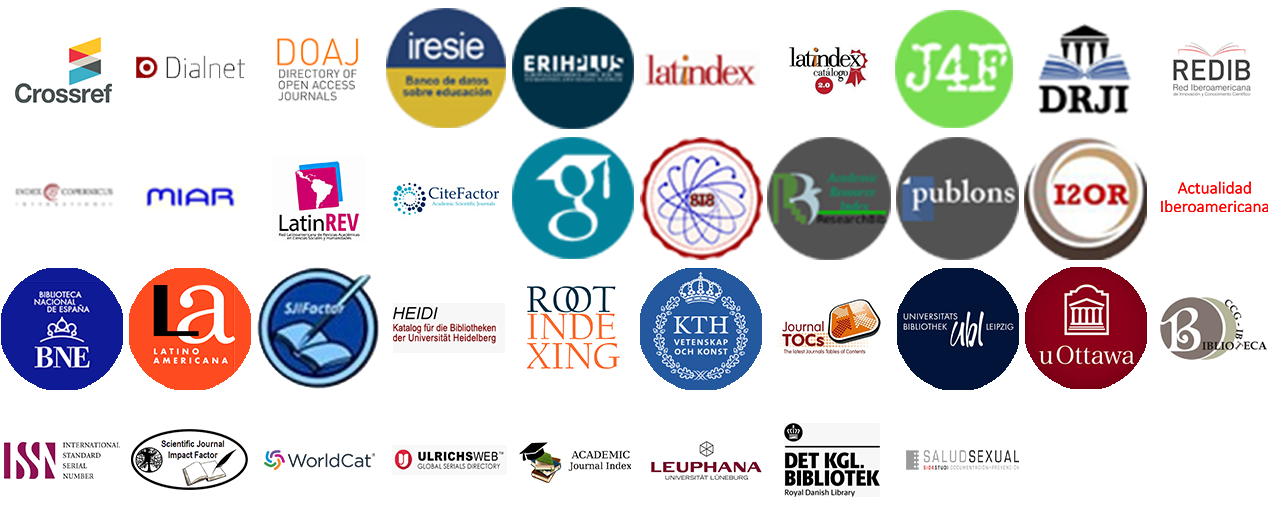Data science technique for forecasting natural gas consumption in the steel industry
DOI:
https://doi.org/10.36825/RITI.12.26.007Keywords:
Data Science, Multiple Linear Regression, Forecasting, Natural Gas, Steel IndustryAbstract
Efficient scheduling of natural gas energy resources within the steel industry faces many challenges, as this sector does not have the necessary measures and tools to support its efficient management. In this study, a forecasting approach to natural gas consumption is proposed using the predictive technique of multiple linear regression. For the development of the proposed model, the main variables related to natural gas consumption that will make up the predictive model are established. The evaluation of the model was carried out using data from a steel company in Mexico. The results of mean absolute percentage error, root mean square error and mean absolute deviation of RLM models (MAPE: 10.23%, RMSE: 20492.32, DAM: 20009.03) vs. traditional method (MAPE: 34.05%, RMSE:93055.92, DAM: 65170.91), reflect that the proposed models significantly improve natural gas resource management, providing substantial improvement in natural gas consumption volume estimates for proper energy scheduling.
References
Viteri Rade, L. Y., Franco Villon, M. N. (2022). El desarrollo organizacional a través del talento humano. E-IDEA Journal of Business Sciences, 4 (17), 30-44. https://doi.org/10.53734/eidea.vol4.id233
Hu, Z., He, D., Feng, K., Liu, P., Jia, Y. (2019). Optimal Design Model of the Energy Systems in Iron and Steel Enterprises. Applied Sciences, 9 (22), 2-9. https://doi.org/10.3390/app9224778
Wang, Y., Wen, Z., Yao, J., Doh Dinga, C. (2020). Multi-objective optimization of synergic energy conservation and CO2 emission reduction in China’s iron and steel industry under uncertainty. Renewable and Sustainable Energy Reviews, 134, 1-13. https://doi.org/10.1016/j.rser.2020.110128
Yuan, Y., Na, H., Chen, C., Qiu, Z., Sun, J., Zhang, L., Du, T., Yang, Y. (2024). Status, challenges, and prospects of energy efficiency improvement methods in steel production: A multi-perspective review. Energy, 304. https://doi.org/10.1016/j.energy.2024.132047
Gao, C., Gao, W., Song, K., Na, H., Tian, F., Zhang, S. (2019). Comprehensive evaluation on energy-water saving effects in iron and steel industry. Science of the Total Environment, 670, 346-360. https://doi.org/10.1016/j.scitotenv.2019.03.101
Wang, X., Zhang, T., Luo, S., Abedin, M. Z. (2023). Pathways to improve energy efficiency under carbon emission constraints in iron and steel industry: Using EBM, NCA and QCA approaches. Journal of Environmental Management, 348. https://doi.org/10.1016/j.jenvman.2023.119206
Sun, W., Wang, Q., Zhou, Y., Wu, J. (2020). Material and energy flows of the iron and steel industry: Status quo, challenges and perspectives. Applied Energy, 268, 1- 15. https://doi.org/10.1016/j.apenergy.2020.114946
Nenchev, B., Panwisawas, C., Yang, X., Fu, J., Dong, Z., Tao, Q., Gebelin, J., Dunsmore, A., Dong, H., Li, M., Tao, B., Li, F., Ru, J., Wang, F (2022). Metallurgical Data Science for Steel Industry: A Case Study on Basic Oxygen Furnace. Steel research international, 93, 1-13. https://doi.org/10.1002/srin.202100813
Karthick, K., Dharmaprakash, R., Sathya, S. (2024). Predictive Modeling of Energy Consumption in the Steel Industry Using CatBoost Regression: A Data-Driven Approach for Sustainable Energy Management. International Journal of Robotics and Control Systems, 4 (1), 33-49. https://doi.org/10.31763/ijrcs.v4i1.1234
Rojas, J. C., Hasanbeigi, A., Sheinbaum, C., Price, L. (2017). Energy efficiency in the Mexican iron and steel industry from an international perspective. Journal of Cleaner Production, 158, 335-348. https://doi.org/10.1016/j.jclepro.2017.04.092
Wolniak, R., Saniuk, S., Grabowska, S., Gajdzik, B. (2020). Identification of Energy Efficiency Trends in the Context of the Development of Industry 4.0 Using the Polish Steel Sector as an Example. Energies, 13 (11), 2-16. http://dx.doi.org/10.3390/en13112867
Zhou, P., Xu, Z., Zhu, X., Zhao, J., Song, C., Shao, Z. (2024). Granulation-based long-term interval prediction considering spatial–temporal correlations for gas demand prediction in the steel industry. Expert Systems with Applications, 248. https://doi.org/10.1016/j.eswa.2024.123382
Wang, R. Q., Jiang, L., Wang, Y. D., Roskilly, A. P. (2020). Energy saving technologies and mass-thermal network optimization for decarbonized iron and steel industry: A review. Journal of Cleaner Production, 274, 1-28. https://doi.org/10.1016/j.jclepro.2020.122997
Norbert, R., Kim, J., Griffay, G. (2020). A system dynamics framework for the assessment of resource and energy efficiency in iron and steel plants. Journal of Cleaner Production, 276, 1-10. https://doi.org/10.1016/j.jclepro.2020.123663
Ahmad, I., Arif, M. S., Cheema, I. I., Thollander, P., Khan, M. A. (2020). Drivers and Barriers for Efficient Energy Management Practices in Energy-Intensive Industries: A Case-Study of Iron and Steel Sector. Sustainability, 12 (18), 1-16. https://doi.org/10.3390/su12187703
Karimi-Zare, A., Shakouri G, H., Kazemi, A., & Kim, E.-S. (2024). Aggregate production planning and energy supply management in steel industry with an onsite energy generation system: A multi-objective robust optimization model. International Journal of Production Economics, 269. https://doi.org/10.1016/j.ijpe.2024.109149
Tang, L., Meng, Y. (2021). Data analytics and optimization for smart industry. Frontiers of Engineering Management, 8, 157–171. https://doi.org/10.1007/s42524-020-0126-0
Díaz, D., Ocampo, O. (2022). Gas natural para la transición energética y competitividad de Mèxico. Instituto Mexicano para la Competitividad A. C. https://imco.org.mx/wp-content/uploads/2022/08/Gas-Natural-Competitivo-en-Mexico.pdf
Jin, F., Lv, Z., Li, M., Mou, L., Zhao, J., Wang, W. (2018). A Causal Model-Based Scheduling Approach for Coke Oven Gas System in Steel Industry. IFAC-PapersOnLine, 51 (21), 7-12. https://doi.org/10.1016/j.ifacol.2018.09.384
He, K., Wang, L. (2017). A review of energy use and energy-efficient technologies for the iron and steel industry. Renewable and Sustainable Energy Reviews, 70, 1022-1039. https://doi.org/10.1016/j.rser.2016.12.007
Hasan, M., Hoq, T., Thollander, P. (2018). Energy management practices in Bangladesh's iron and steel industries. Energy Strategy Reviews, 22, 230-236. https://doi.org/10.1016/j.esr.2018.09.002
Maaouane, M., Zouggar, S., Krajacic, G., Zahboune, H. (2021). Modelling industry energy demand using multiple linear regression analysis based on consumed quantity of goods. Energy, 225. https://doi.org/10.1016/j.energy.2021.120270
Soto-Bravo, F., González-Lutz, M. I. (2019). Análisis de métodos estadísticos para evaluar el desempeño de modelos de simulación en cultivos hortícolas. Agronomía Mesoamericana, 30 (2), 517-534. https://doi.org/10.15517/am.v30i2.33839
Izhar, I., Radiman, R., Wahyun, S. F. (2023). Investigating factors affecting employees’work productivity. Journal of Enterprise and Development (JED), 5 (Special-Issue-2), 1-18. https://journal.uinmataram.ac.id/index.php/jed/article/view/7982
Vilà Baños, R., Torrado Fonseca, M., Reguant Álvarez, M. (2019). Análisis de regresión lineal múltiple con SPSS: un ejemplo práctico. Revista d'Innovació i Recerca en Educació, 12 (2), 1-10. http://doi.org/10.1344/reire2019.12.222704
Alita, D., Putra, A. D., Darwis, D. (2021). Analysis of Classic assumption test and multiple linear regression coefficient test for employee structural office recommendation. Indonesian Journal of Computing and Cybernetics Systems, 15 (3), 295-306. https://doi.org/10.22146/ijccs.65586
Pisica, D., Dammers, R., Boersma, E., Volovici, V. (2022). Tenets of Good Practice in Regression Analysis. A Brief Tutorial. World Neurosurgery, 161, 230-239. https://doi.org/10.1016/j.wneu.2022.02.112
Levin, R., Rubin, D. (2004). Estadística para administración y economía (7ma. Ed.). Pearson Educación.
Mejía Vásquez, E. J., Gonzales Chávez, S. (2019). Predicción del consumo de energía eléctrica residencial de la Región Cajamarca mediante modelos Holt -Winters. Ingeniería Energética, XL (3), 181-191. https://www.redalyc.org/journal/3291/329160723002/html/
Robeson, S. M., Willmott, C. J. (2023). Decomposition of the mean absolute error (MAE) into systematic and unsystematic components. Plos one, 18 (2), 1-18. https://doi.org/10.1371/journal.pone.0279774
Hodson, T. O. (2022). Root-mean-square error (RMSE) or mean absolute error (MAE): when to use them or not. Geoscientific Model Development, 15 (14), 5481–5487. https://doi.org/10.5194/gmd-15-5481-2022
Voloh, B., Watson, M. R., Konig, S., Womelsdorf, T. (2020). MAD saccade: statistically robust saccade threshold estimation via the median absolute deviation. Journal of Eye Movement Research, 12 (8), 1-12. https://doi.org/10.16910%2Fjemr.12.8.3
Rodríguez Sánchez, A., Salmerón Gómez, R., García, C. (2019). The coefficient of determination in the ridge regression. Communications in Statistics - Simulation and Computation, 51 (1), 201-219. https://doi.org/10.1080/03610918.2019.1649421
Schober, P., Boer, C., Schwarte, L. A. (2018). Correlation Coefficients: Appropriate Use and Interpretation. Anesthesia & Analgesia, 126 (5), 1763–1768. https://doi.org/10.1213/ANE.0000000000002864
Vega Vilca, J. C., Guzman, J. (2011). Regresión PLS y PCA como solución al problema de multicolinealidad en regresión múltiple. Revista de Matemática Teoría y Aplicaciones, 18 (1), 9–20. https://www.redalyc.org/articulo.oa?id=45326927002
Downloads
Published
How to Cite
Issue
Section
License
Copyright (c) 2024 Revista de Investigación en Tecnologías de la Información

This work is licensed under a Creative Commons Attribution-NonCommercial 4.0 International License.
Esta revista proporciona un acceso abierto a su contenido, basado en el principio de que ofrecer al público un acceso libre a las investigaciones ayuda a un mayor intercambio global del conocimiento.
El texto publicado en la Revista de Investigación en Tecnologías de la Información (RITI) se distribuye bajo la licencia Creative Commons (CC BY-NC
 ), que permite a terceros utilizar lo publicado citando a los autores del trabajo y a RITI, pero sin hacer uso del material con propósitos comerciales.
), que permite a terceros utilizar lo publicado citando a los autores del trabajo y a RITI, pero sin hacer uso del material con propósitos comerciales.



